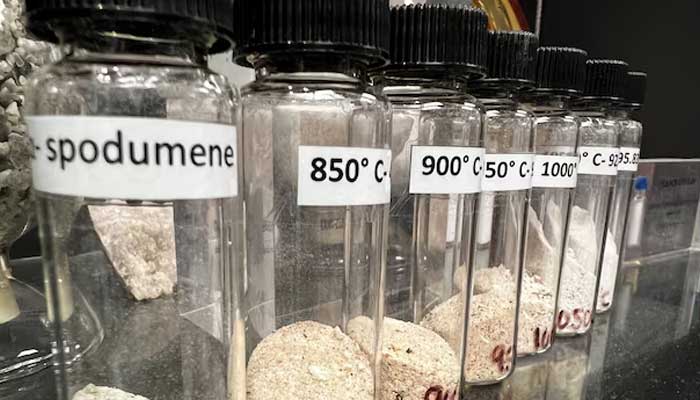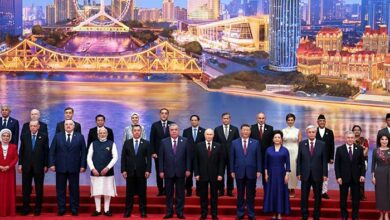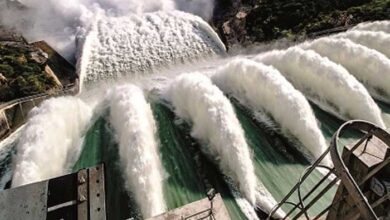It’s quite interesting to see global politics taking such unpredictable turns. It was US President Trump who first started the tariff war, now attracting the world’s attention and apparently giving geopolitics precedence over geo-economics.
President Trump invited rivalry from the Chinese leadership by imposing unprecedented tariffs and trade restrictions on Chinese companies and products. Now, China has launched its counteroffensive by imposing controls over rare earth elements.
These rare earth metals and their regulation represent new rules of the game in global politics — rules that may play a decisive role in determining the next world power. The new game is rapidly shaping the world’s next political and economic landscape.
The tariff turmoil has shaken the world, disrupting the global supply chain. New lines of communication are being established to restore a smooth supply chain mechanism.
But, for the time being, everything remains topsy-turvy. China, unlike in the past, has retaliated forcefully and taken decisive steps to counter additional US tariffs in a tit-for-tat manner. This move has shocked and surprised the US administration.
China has placed restrictions on exports of rare earth metals, over which it holds a near-monopoly of about 80–90% of global supply. It has imposed a total export ban on 12 out of 17 rare earth metals, affecting almost 90% of high-powered technology-driven industries and products — from airplanes to long-range intercontinental ballistic missiles.
Rare earth elements represent a new frontier in global economics.
They are crucial for the production of everything from smartphones to fighter jets. China maintains a near-monopoly in the processing and refining of rare earth metals.
Under new rules, foreign companies require the Chinese government’s approval to export products containing even trace amounts of rare earths and must declare the intended use of such products. This development has shaken the US and the Western world, creating major hurdles in restoring a smooth global supply chain.
President Trump reacted hastily by announcing new tariff lines aimed at China, affecting Chinese exports to the US. However, the Chinese leadership appears too strong to be intimidated by such tactics.
The global supply chain economy is heavily dependent on critical minerals consisting of 17 rare earth elements. China had initially restricted seven elements on its export control list but has now expanded it to 12, adding five more. These minerals are of a critical nature, and their restrictions are poised to affect high-end technological products, including AI-driven devices that rely on chips and semiconductors.
The 17 rare earth elements include 15 lanthanides along with scandium and yttrium. The seven elements already on China’s export control list — issued by the Ministry of Commerce — were samarium, gadolinium, terbium, scandium, yttrium, dysprosium and lutetium. The five newly added ones are holmium, erbium, thulium, europium and ytterbium.
Rare earth elements are found in deposits across the world, including the US, Russia, China, Australia, India, Brazil, Afghanistan, Pakistan, Vietnam and Greenland.
However, it is the processing and refining of these elements that matter most for their productive use. China holds a near-monopoly in this area as well, having developed advanced refining technology essential for industrial and technological applications, including those that run complex algorithms in AI.
Historically, the industrial revolution integrated the world by enabling different countries to specialise in producing different parts of a product, trading with each other to complete the supply chain through international commerce.
Yet refining rare earth elements remains a complex process. Since China dominates this sector, it now uses this leverage as a tool to respond to and balance the high tariff restrictions imposed by the US.
Trade negotiations between the US administration and Chinese leadership are therefore essential to ease trade barriers and resolve the troubles currently faced by international trade. Global economics and trade require immediate action by world leaders to restore the international supply chain through renewed communication and negotiation – the sooner, the better.
What kind of new world order will emerge in the near future as a result of competition between the US and the Russia-China axis remains to be seen.
Russia, too, has its own position in world affairs, particularly through its economic impact on Europe, which is already facing severe inflationary pressures. Numerous challenges confront global economic diplomacy, putting the world’s supply chain mechanism at risk.
The Chinese economy has emerged as a significant threat to US economic dominance, especially in the field of technology. Rare earth elements and critical minerals, used in electric batteries and microchips necessary for Artificial Intelligence (AI), have given China a near-monopoly over semiconductors crucial for new and emerging technologies. As a result, world economic diplomacy is taking new turns due to the ongoing trade war between the US and China.
Following China’s tightening control over rare earth minerals, US imports of Chinese semiconductors, IT hardware and consumer electronics have dramatically fallen.
Since China is a major global manufacturer providing affordable goods and services, it cannot easily be sidelined from the world economy. However, the US continues to attempt to disrupt global supplies from China to markets under its sphere of influence, often under various pretexts.
Washington’s efforts to diversify imports and make supply chains more resilient have not produced encouraging results, particularly in the fields of batteries and microchips for new electrical technologies. China still dominates global supply chains in laptops, smartphones, computers, monitors, video games and toys.
The new reality for the world is the centrality of battery and microchip technologies, both of which depend heavily on China’s vast resources and stockpiles.
However, China’s supply chain is under stress these days due to multiple political and economic reasons — chief among them the extremely high tariffs imposed by the US on most Chinese imports. Nato countries are following suit under American influence, a move that could ultimately prove detrimental to the future supply chain of semiconductors.
South Korea, for example, halved its chip exports to China in January this year under American pressure, even though it cannot afford to lose access to the Chinese market. Vietnam, too, has aligned itself with the US chip alliance against China.
Meanwhile, China’s expanded export control list on rare earth elements has perplexed the US and its allies, including the EU, leaving them uncertain about how to proceed further.
Rare earth elements and critical minerals have now gained such strategic importance that no nation can afford to ignore them. Pakistan enjoys good relations with both China and the US. Its strategic partnership with China is time-tested, while relations with the US have often been volatile.
There is now an urgent need to reassess and reevaluate the entire process of cooperation, particularly regarding rare earths and critical minerals. Pakistan cannot afford to lose one friend at the cost of another in the current global competition over these vital resources.
Rare earth elements are indeed the new name of the game. International trade must focus on restoring and stabilising the global supply chain mechanism. The most crucial question now is how to mitigate geopolitical and geo-economic tensions that disrupt international trade.
Geopolitical strains need to be eased for the larger interest of global commerce and supply chain restoration. World leaders, especially President Trump and President Xi Jinping, need to negotiate trade deals that serve the best interests of international relations and global stability.







